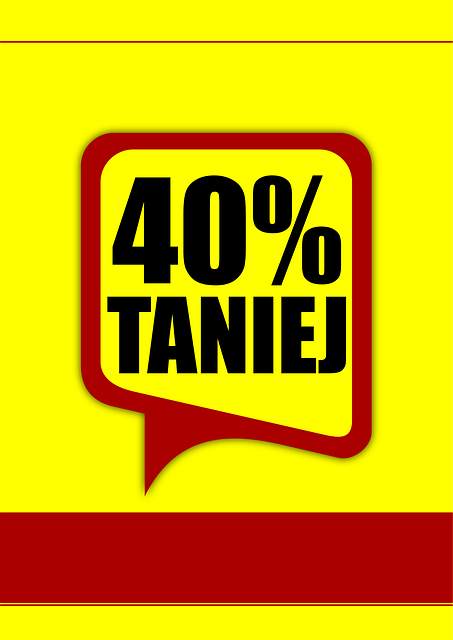Does Binance Offer Paper Trading for Crypto Traders?
Author: Jameson Richman Expert
Published On: 2025-11-09
Prepared by Jameson Richman and our team of experts with over a decade of experience in cryptocurrency and digital asset analysis. Learn more about us.
Does Binance offer paper trading? In short: yes — but not in the way many retail traders expect. Binance doesn’t provide a one-click “paper trading” toggle inside every live account interface; instead it provides official testnet/sandbox environments (for Futures and some Spot APIs), developer APIs for simulated trades, and multiple third-party or platform-integrated options for virtual trading and strategy testing. This article explains exactly what Binance offers, how to access and use Binance testnets, practical step-by-step examples, limitations you must know, alternatives (including demo accounts on other exchanges), and best practices for turning simulated results into robust live trading performance.

What is paper trading? Why traders use it
Paper trading (also called simulated trading or demo trading) is the practice of executing hypothetical buy/sell orders using live or historical market data without risking real capital. Traders use paper trading to:
- Test strategies and verify edge before risking real funds.
- Learn order types, execution flows, and exchange UIs safely.
- Backtest and refine risk management and position sizing rules.
- Evaluate new tools, bots, or APIs in a safe environment.
For a clear industry definition, see Investopedia’s explanation of paper trading. Using a sandbox or testnet preserves real-world market behavior (price ticks, spreads on test data) while isolating risk.
Does Binance offer paper trading? The concise answer
Binance does not have a universal “paper trading” switch embedded into every live Binance account for all product types. Instead, Binance supports simulated trading through the following official channels:
- Binance Futures Testnet — a dedicated test environment for perpetual and futures products that mirrors the live Futures market, allowing you to execute simulated leverage trades without real funds.
- Binance Spot/Testnet API (Binance Testnet) — historical and simulated endpoints via testnet or sandbox APIs where developers can place orders and test integrations.
- Third-party integrations and platforms — TradingView, bots, and demo platforms that use Binance market data or connect via test APIs to simulate trading.
So: yes, Binance offers paper trading capabilities — but mainly through testnets, developer APIs, and partner platforms rather than an always-on simulated account inside the standard live trading UI.
Official Binance testnets: What they are and how they work
Binance’s official test environments simulate market behavior for product testing and development. The most used ones are:
- Binance Futures Testnet — an environment that mirrors the Binance Futures platform where you can place market, limit, OCO orders, and test margin/leverage logic without real funds. URL and access change occasionally; search “Binance Futures Testnet” or visit Binance’s developer docs for the current endpoint.
- Binance Spot Testnet (testnet.binance.vision) — a sandbox for spot and margin APIs where developers and experienced users can test order flows and trading bots.
For developers and advanced users, the testnets provide API keys and balances in simulated stablecoins to experiment. Keep in mind the testnet liquidity, slippage, and order matching rules may not perfectly replicate live market conditions.
Learn more via Binance’s developer resources and testnet pages — and check Binance Academy for tutorials on API usage and testnet sign-up.
Binance Testnet (developer docs) | Binance Academy

How to start paper trading on Binance — step-by-step (Futures Testnet example)
Below is a practical walkthrough for using Binance Futures Testnet to paper trade strategies before going live.
- Create a testnet account: Visit Binance Futures Testnet registration (search for the current testnet URL or access via Binance developer sites). Sign up using an email and password for the sandbox — these credentials are separate from your live Binance account.
- Get testnet funds: Testnets usually give you simulated USD or USDT balances. Use the “faucet” feature to request test funds and top up your account.
- Familiarize with the interface: Practice placing market, limit, stop-limit, and OCO orders. Test leverage, margin modes (isolated vs cross), and position sizing without risk.
- Use APIs for automation: Generate sandbox API keys and connect your trading bot or script. Test order placement, cancellations, fill events, and error handling in a safe environment.
- Record and analyze: Track P&L, slippage, funding fees, and order latency. Compare simulated results to historical live market conditions.
Example: If testing a mean-reversion futures strategy, place limit orders at specified price bands in the testnet and monitor execution and realized P&L, then iterate on sizing and stop-loss rules.
Important nuance: Live market differences
Testnets provide realism but cannot perfectly reproduce live conditions. Key differences you should expect:
- Lower depth and liquidity on testnets -> different slippage behavior.
- Data feed or matching engine timing may differ from live market latency.
- Some product features (e.g., promotions, margin changes, funding schedule updates) may not be simulated identically.
Spot trading: Does Binance offer demo or paper trading for Spot?
Binance’s Spot market does not have a widely publicized, built-in paper trading account for casual users inside the normal UI in the same obvious way some platforms do. However:
- Developers can use the Binance Spot Testnet (testnet.binance.vision) to simulate spot orders via API.
- Third-party platforms (for example TradingView’s paper trading, local simulators, or exchange demo integrations) can be used to simulate Spot strategies while referencing Binance live price data.
- Binance’s Charity/Training or demo environments occasionally appear in region-specific or educational offerings — check Binance Academy and product announcements.
If your objective is to practice simple spot buys and sells with a UI similar to Binance’s, many traders combine TradingView paper trading (or local trading simulators) with Binance market data. A handy guide to using TradingView charts and tricks is available for free to help you link charting to your simulated orders.
See a practical guide on using TradingView charts and workarounds here: Can I use TradingView charts for free? Complete guide, tips and workarounds.
Practical examples: How to simulate strategies using Binance testnets and tools
Here are two sample workflows — one manual and one automated — to show how traders typically paper trade for spot and futures strategies.
Manual: Backtest and paper trade a swing spot strategy
- Backtest using historical candles in TradingView to confirm rules (entry based on RSI + MA crossover).
- Use TradingView paper trading to place simulated orders and practice position sizing under live price action.
- Record trades, adjust risk rules, and iterate. When confident, execute small live trades on Binance to validate slippage and fees.
- Reference macro conditions — e.g., if altcoin season is approaching, adapt your trailing stop rules. (See: altcoin season guide for context.)
Helpful reading to align strategy with market cycles: What is Alt Coin Season in 2025? Complete Guide for Traders.
Automated: Testing a futures mean-reversion bot
- Develop the bot logic locally and backtest against tick or minute data.
- Deploy the bot to use Binance Futures Testnet API keys (sandbox keys) and feed it simulated orders.
- Monitor order fills, margins, and liquidation logic in the testnet environment and log latency and error cases.
- Iterate risk parameters and stop-out logic. After consistent positive edge on testnet, run the bot with a small live allocation on Binance Futures.
For advanced futures mechanics and to understand perps funding, consult Binance’s Futures documentation and developer materials.

Limitations of Binance paper trading/testnets — what to watch for
Using testnets and simulated accounts is critical, but they have limitations that can give a false sense of security if ignored:
- Liquidity mismatch: Testnets often have shallower order books => lower slippage than live during large orders or the opposite depending on the test environment.
- Latency differences: Network and matching engine speeds on testnets can differ from live trading.
- Psychological gap: Paper trading’s emotional experience is different without real capital at stake — risk management under stress differs during live drawdowns.
- Fee behavior: Some test environments do not mirror maker/taker fees, rebates, and fee-tier logic accurately.
- Edge degradation: Strategies that look profitable on testnets may fail due to slippage, funding rate variability, or unmodeled exchange behavior.
Because of these limits, practitioners recommend a staged approach: test on paper, run a small live allocation, measure live-edge changes, then scale gradually with strict risk controls.
Alternatives to Binance paper trading — demo offerings and platforms
If you want an out-of-the-box demo UI or additional simulated testing options, consider:
- TradingView paper trading: Simple GUI-based paper trading tied to chart analysis and indicators. Useful for discretionary traders. (See the TradingView guide link earlier.)
- Other exchanges with demo modes: Several exchanges offer clearer demo accounts — Bybit and Bitget historically have demo/simulated modes that are UX-friendly for newcomers. Use their demo tools to practice futures and spot orders.
- Centralized demo trading platforms and simulators: Tools like CryptoHopper’s simulator or local backtesting frameworks let you test strategies under controlled scenarios.
If you want to sign up and try alternatives, here are referral links for quick access to popular exchanges (use responsibly and read terms):
- Register at Binance — for live trading and access to official docs and testnet links.
- Register at MEXC — demo tools and listing opportunities.
- Register at Bitget — known for derivatives and demo modes.
- Register at Bybit — strong demo environment for futures and perpetuals.
How to convert paper trading success into consistent live results
Paper trading is only the start. To bridge the gap to profitable live trading, follow these practical steps:
- Use realistic slippage and fees in simulations. Model maker/taker fees and expected slippage by analyzing live order book snapshots.
- Stress-test capital allocation. Simulate worst-case streaks (max drawdowns) and ensure your account can survive them.
- Start small with a live rollout. Use a small percentage of intended capital initially; increase only after consistent live success.
- Maintain strict trade journaling. Record rationale for every trade, not just P&L metrics — track emotional state and adherence to rules.
- Set automated risk controls. Use stop-loss and take-profit orders, and test their behavior on live market swings.
- Expect Bayesian updating. Keep updating your priors — if a live condition permanently changes (e.g., structural liquidity change in an altcoin), update strategy parameters.

Real-world example: Simulating a breakout strategy on Binance Futures Testnet
Here’s an applied example you can follow to test a breakout scalping strategy on Binance Futures Testnet:
- Define rules: Enter long when price breaks above 1-hour high with volume > X and RSI < 70. Use 3x leverage, target 0.8% and stop-loss at 0.4%.
- Backtest: Run the logic across historical 1-hour bars for the last 6 months to estimate expectancy and win rate.
- Paper trade: Deploy to Binance Futures Testnet for 2 weeks of live-synced paper trading during overlapping market hours to measure slippage and funding costs.
- Analyze: Compare expected P&L to realized testnet P&L. Record differences and refine entries, exits, and position sizing.
- Small live test: Move to a live Binance Futures account with a small allocation (e.g., 1–3% of target capital) and compare real-world fills and behavior.
This approach isolates strategy edge before committing significant capital and helps reveal execution-level shortcomings.
Frequently asked questions (FAQ)
Q: Does Binance have a built-in paper trading button on the main web UI?
A: No — not as a universal toggle for all products. Binance’s simulated options reside in testnet environments and via API. For chart-based paper trading, use TradingView or third-party demo services.
Q: Are Binance testnets free to use?
A: Yes — testnets are free. They provide simulated balances and API endpoints for testing. Always use the correct sandbox URL and follow Binance’s developer documentation to avoid confusion with live endpoints.
Q: Can I use the same API keys for testnet and live Binance?
A: No — testnet API keys are separate from live keys. Never use live API keys on third-party demo environments. Keep credentials isolated for security.
Q: How accurate is TradingView paper trading compared to Binance fills?
A: TradingView paper trading approximates fills using chart data but may not perfectly model Binance’s order book or fee structure. Use TradingView for strategy logic and chart work, then test execution on Binance testnets or with small live orders for accuracy.
For additional instruction on TradingView and workarounds, see this guide: Can I Use TradingView Charts for Free — Complete Guide.
Further reading and relevant market context
To complement paper trading exercises, combine your testing with macro and micro market research. For example:
- Understand on-chain and transaction speed considerations when trading certain tokens (e.g., XRP): How long does an XRP transaction take in 2025? Complete guide.
- Consider market forecasts and long-term scenarios when stress-testing allocation (e.g., Bitcoin and macro cycles): 2025 Forecast — What will Bitcoin be worth in 2030?.
- Learn practical community tips for Binance spot trading and order behavior from crowdsourced resources: Binance Spot Trading Reddit Guide 2025.

Conclusion — is Binance suitable for paper trading?
Yes—Binance is suitable for paper trading, but with caveats. It does not offer a single, built-in demo toggle for all users in the primary UI. Instead, Binance supports paper trading through:
- Official testnets (Futures Testnet and Spot/Testnet APIs) for realistic simulated order execution.
- Developer APIs to build robust simulations and bot testing environments.
- Third-party platforms and charting services (e.g., TradingView) for discretionary practice and chart-based paper trading.
Use Binance testnets for execution and API testing, TradingView for discretionary chart-driven practice, and small live rollouts to validate real-world slippage and psychology. Combine simulated practice with market context — reading up on transaction behaviors, market cycles, and forecasts — to make better-informed live trading decisions. Useful resources to dig deeper are linked above and include technical how-to guides and market analysis.
Start practicing today: register with Binance for live accounts and access official docs (use the registration link), or try alternative exchanges for demo UIs via the referral links below:
Finally, always test extensively, model execution costs, and scale only after live validation. For strategy alignment with altcoin cycles and more advanced context, see the linked deep-dive guides in this article. Happy (simulated) trading!